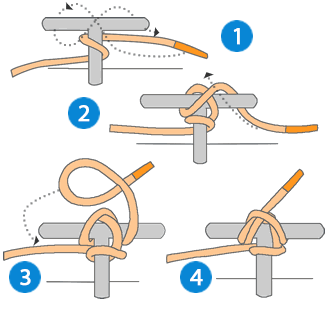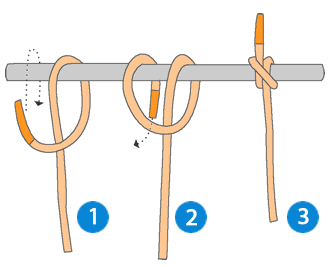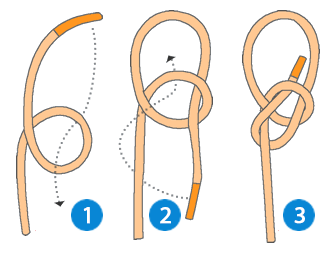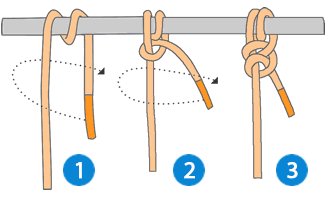Mooring Boat : How to properly moor your boat ?
How to moor a boat at the dock ?
Proper docking of a boat requires the use of proper equipment and the application of knowledge about docking techniques. Mooring a boat is the crucial step when you return from your daily trip or when you make a stopover during it. Mooring a boat consists in fixing it against a dock or a pontoon, thanks to a called . These mooring lines are usually attached to the mooring bitts present on the quay, or to rings provided for this purpose. Mooring is in fact a way to park your boat.
It is all the more important as it is the one that will keep your boat safe and stable at the dock. To ensure the safety of your sailboat, catamaran, etc., you must be aware of the techniques and equipment required to achieve a quality mooring!
The fender, an essential element for mooring
The fender, otherwise known as the "defense bead", is the main element that will protect the hull of your boat from the movements and waves pushing it onto the edge of the pontoon, or onto the boat of your neighbor. As an example, on a 8 meter boat, these inflatable equipments are to be positioned towards the center of the boat, every 2.5 meters. In any case, your boat must have at least 6 fenders. For optimal efficiency, these inflatable objects must measure 2/3 of the height of the freeboard, in other words the vertical distance between the waterline and the dock.
The best fenders of the moment:
Finally, to keep your protective equipment at peak performance, it is recommended to check the pressure once or twice a year. To do this check, you can use a pressure gauge or measure the circumference of the product as for the
}. Here are the recommendations for the pressure of your equipment: Tip: depending on the mooring position you choose, you may want to install a
to avoid too much shock when mooring. Especially if your neighbor is mooring next to your boat, the latter will be protected to the maximum. Then, there are different models of rope which, in particular, have a spliced eye allowing to moor your boat. For example, the
belongs to the category of ropes for mooring a boat. There are also leaded mooring lines such as the
or the
. Other products such as mooring and anchoring humps allow you to stabilize your boat at the dock. On the other hand, a useful and interesting accessory for your boat can accompany your mooring. It is the springs.
The best mooring ropes of the moment:
There are different types of springs. Galvanized springs, rubber springs, stainless steel springs, and silencers. Also called "shock absorbers", these boat equipments ensure the absorption of shocks, as their name indicates. Here are the 4 types of boat shock absorbers. First of all, all sailors must know how to distinguish the 3 types of mooring lines that stabilize a boat when anchored. First, there are the points, which are ropes positioned towards the outside. Then come the guards, which are crossed from the front to the back and vice versa. Finally, the third type of mooring line is called the traversers. These are perpendicular to the boat. They are not mandatory for anchoring your boat. However, these ropes reinforce the stability of your boat on the water. This is a mooring in which your sailboat or other is parallel to the dock thanks to 4 mooring lines. These are positioned as shown in the following image: As its name indicates, the sailor parks in the harbor with the stern of his boat perpendicular to the quay. In this position, at the front the floating vehicle is held by a trunk*, an anchor or a hanger. While at the back it is hooked to bollards, cleats with a mooring hawser. In addition, to stabilize it as much as possible, you can add mooring lines that cross each other as shown in the following picture: *PS: A trunk is a floating buoy connected to a dead weight submerged in the water. A pendulum is a rope or chain connected to a mother chain attached to a dead weight. This is simply tying up by attaching your lines to the cleats of a boat that is stuck to the dock. Nevertheless, you should not neglect the attachment of mooring lines to the dock. This allows to increase the pressure on the boat already stabilized at the quay. A "catway" is a small additional floating platform, which is located perpendicularly to the main pontoon or quay. Mooring is done in the same way as on a quay, with the 3 types of mooring hawsers (Points, Guards, Crossings) mentioned above. Here is an illustration to know how to moor a boat on a catway: Concerning these ropes, the two front spikes allow the stability on that side, and the adjustment of the distance between the boat and the dock. Then the back guard comes to maintain your boat as close as possible to the catway. Then the front guard comes to immobilize definitively your boater. Finally, the use of ferries makes it easier to embark and disembark by keeping your boat as close to the catway as possible. Placed last in this guide, mooring on a trunk is a rare solution and is most often used by large vessels. To perform this operation, a small boat is useful to guide the vessel during the mooring phase. This small model carries the hawsers to the mooring box. When docking, the speed and direction of movement of your boat must be the same as the ship's to avoid the small boat tipping over because of over-stretched hawsers. However, if you have a sailboat or even a small boat, you can also try a mooring on a trunk, i. e. a buoy stabilized by a dead weight. Finally, to carry out any type of mooring, it is necessary to have good mooring equipment and to know how to tie stubborn knots These are the rope-tightening techniques that ensure that your boat is parked at the dock. So it's a good idea to know the 4 main rope knots before you set sail. Here they are: As the name suggests, the cleat knot is used to secure your mooring line to a cleat. It is a dead turn, which is then accompanied by a figure-eight crossing, and finally ends with an inverted half-key. A dead turn is a turn around the element to which the rope is attached. With this simple manipulation, the boat is locked in. The cleat knot is the most popular way to tie up a boat. Summary: This mooring knot, called a capstan knot, is ideal for attaching a fender or mooring to a bitt. This knot requires maximum tension, since its drawback is that it tends to slip. Therefore, use a half-key at the end of the tightening process to secure it. Summary: This knot is typically the one you might have to make on your mooring line. It is simply a matter of making a strong, firm loop. Recond summary: Because a dead turn and two half keys will never let you down if you go to sea without much knowledge, this knot is the easiest to remember and to tie. Indeed, it is very easy to construct and release, despite the tension that will be exerted on it. Two classic knots follow the dead turn, this is what we call two half-keys. To be used on your boat, pontoon, and to attach your fenders. Rummary: The Nautisports team
Which mooring rope should I choose to properly moor a boat at anchor?
How to choose your mooring springs to be safe?
The 5 best positions for mooring a boat to the pontoon
"Alongside" or alongside the dock

Stern to dock

Mooring alongside another boat

On a "catway

On a trunk

Which mooring knots to use to tie up a boat?
Cleat knot
Capstan knot
Chair knot
The dead turn and two half keys















